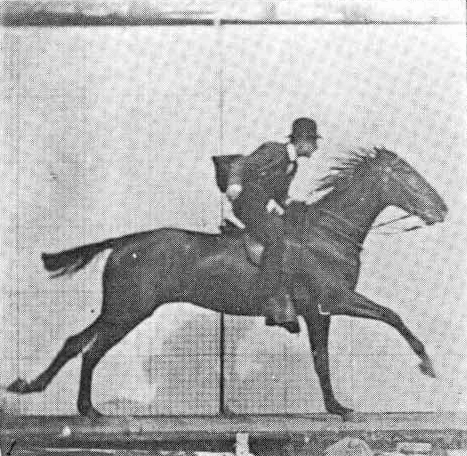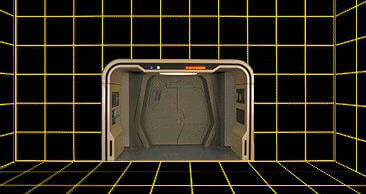
source: Wikimedia Commons
The vast ecosystem of moving pictures that we enjoy today — of television, movies, streaming shows/platforms, YouTube clips, and social media stories — all derived from humble beginnings: In 1878, the British photographer Eadweard Muybridge took a series of 24 photos of a galloping horse in Sacramento. He was trying to definitively answer the question, “When horses run at full speed, do they get all four feet off the ground?” (The answer is yes!) Muybridge used a device called a “zoopraxiscope” to create an optical illusion of movement from still photos to prove this to the local California press, and in the process, created what’s widely considered the first film ever, Sallie Gardner at a Gallop.
Fast forward a century later, and Muybridge’s invention has evolved into a cornerstone of our global culture. Billions of people around the world watch movies and television, gathering with their friends, their family; sometimes just to “Netflix and chill”. The artistic expressiveness of this new medium has evolved — from film to television to mobile — with new techniques and technologies that allow filmmakers to connect to their audiences through dazzling stories, colorful characters, and new fantastical worlds too. But the tipping point that set all this in motion — turning an invention into an industry — was the triumvirate of technology, distribution, and content: First, the invention and refinement of “motion picture” technology; second, the widespread distribution of movies in the nation’s first theater chains; and finally, the broader ecosystem of content creation supported by actors, writers, studios, and other artists. All three had to reach scale for the film industry to succeed.
But what comes next? Despite this world-building across mediums, we have yet to achieve truly immersive experiences in storytelling, gaming, and more… and that’s where virtual reality (VR) comes in.
There is no medium with more creative and cultural potential than VR, as it can fully immerse its viewers into an interactive world created by designers and developers. However, the ecosystem is still in the early stages today — we are not that far from the Eadweard Muybridge invention phase, with the first modern prototypes only released less than a decade ago.

Star Trek Holodeck
All of this is why, today, we are excited to announce Andreessen Horowitz’ Series A investment in Sandbox VR, a new virtual reality startup with a global presence. Driven by the ambitious goal of radically accelerating this medium, the team is literally building the Holodeck — the virtual reality environment that first caught people’s imaginations in Star Trek. They are building the triumvirate of distribution, technology, and content starting with a network of high-end retail locations that combines premium hardware, motion capture technology, and a low-latency software stack to deliver a social multiplayer experience. They are creating custom games to take advantage of these locations and technology stack to create the world’s best virtual reality experience. This allows anyone to experience amazing experiences with friends and family, without having to own hardware devices and fancy setups.
This is akin to how the first movie theater chains came about. The technology for motion pictures was first invented in the late 1870s, but theaters only became widespread in the early 1910s — almost half a century later. Modern storytelling in the new medium of film — and the emergence of the Hollywood star system — began in the 1920s, with in-home experiences emerging decades later. Similarly, we need a “movie theater” phase for VR to truly take off, especially since VR headsets aren’t yet as ubiquitous as TVs and mobile phones today. Furthermore, the high-end experience — with haptic sensors, motion capture, custom multiplayer games, and more built in — allows a truly immersive experience. In the U.S., as malls seek to reinvent themselves, this also represents an opportunity to reinvent shared social spaces for people to gather.
The Sandbox team is taking on the triumvirate of technology, distribution, and content all together and all at once to bring VR to its next phase, accelerating the timeline dramatically. Once the ecosystem around Sandbox begins to achieve critical mass, we expect that the technology will unlock a golden era of storytelling and interactive, immersive entertainment. Some of this will look like gaming, some will look like film, and yet others will resemble music, documentaries — as well as other new, VR-native genres we’ve yet to invent, in much the same way people eventually moved beyond trying to redo plays in early movies. While stories like Ready Player One and the Holodeck from Star Trek have helped us envision an immersive VR future, people will be even more creative in ways we don’t even know to expect as new behaviors emerge in the new medium.
We are thrilled to work with Steve Zhao, Siqi Chen, and the entire Sandbox VR team — they’re the epitome of founder-startup fit: They have deep experience in gaming; they’ve run their own development studios; and they have built games played by millions of users. They have also built and run large teams at Zynga and Postmates, among other places. Steve and the early team built the initial prototype on a shoestring, launching initially in Asia with a single location in the United States (in San Mateo, California, which is open today). After our initial meeting with the team, the entire investment partnership at Andreessen Horowitz went to try out the experience together, and after nearly an hour of shooting zombies, dodging lasers, and solving puzzles, we were blown away by the experience!
Sandbox VR is building their own content, starting with a series of first-person shooters — Deadwood Mansion, The Curse of Davy Jones, and Amber Sky 2088, featuring zombies, pirates, or sci-fi — with a dozen more to come. The experiences have already been well-received by some of the most prolific and creative artists from music, sports, arts, and entertainment world. Moreover, as the broader ecosystem for VR starts to grow, the Sandbox team has been focused on partnerships that let other players — from studios to retail spaces — advance into this new medium of the future, too.
In the history of our civilization, there have been many key advances in arts and culture, driven by a combination of technology innovation and human creativity: Cave paintings and stone cutting tools. Plays in amphitheaters. Books and the printing press. Radio and sound waves. Film and motion picture technology. Television and antennas. Up next: Virtual Reality. We are excited to be part of the journey to create this new medium together, and hope that all of you will join us too… as consumers, creatives, and builders.



